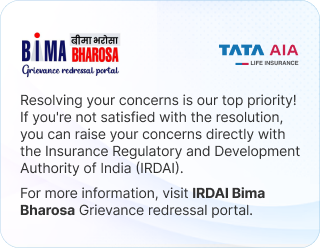Income tax slabs for women are designed to provide specific tax* rate structures catering to the financial circumstances of female taxpayers. These slabs often take into account income levels, age, and other factors, ensuring fair taxation to women.
Women's equal participation in the workforce has contributed to the nation's economy. Since more and more women are becoming financially independent and breaking free from societal norms, understanding the nuances of income tax* regulations for women has become necessary.
The income tax slab for women is the same as for men in India. However, to support the women taxpayers in India, the government has taken various measures. One such benefit is a higher basic exemption limit while income tax e-filing.
Other than this, there are various tax exemptions for women taxpayers under the Income Tax Act 1961. In this blog, we will learn all about the income tax slab for women in India.
Table of Content
Are income tax slabs different for males and females?
There is no separate female income tax slab in the Union Budget 2025, meaning the tax rates are the same for both genders. To encourage female participation in the workforce, the Indian government provided a higher basic income tax exemption for women. After FY 2012-13, this provision was discontinued, and men and women were subject to the same tax structure
In spite of this, women still receive a variety of financial benefits, such as reduced interest rates on home loans, lower stamp duties on property registration, and special deductions that help reduce their taxable income. As a result of these provisions, women in India can attain financial independence as well as grow economically..
The income tax slab in India depends on crucial factors such as income and age of the taxpayer. Taxpayers are classified into three categories for income tax purposes.
- Individuals who are below 60 years of age
- Individuals between 60 to 80 years of age (Senior citizens)
- Individuals who are over 80 years of age (Super Senior citizens)
Income tax slab for women below 60 years
For the fiscal year 2025-26 (assessment year 2026-27), the income tax slab for women below 60 years of age is structured under two tax regimes: the old tax regime and the new tax regime. The two regimes apply equally to all individuals, regardless of gender. Based on their financial situation and the deductions or exemptions they wish to claim, taxpayers can choose between the old and new tax regimes.
New tax regime
Income Slab (₹) |
Tax Rate (%) |
Up to ₹4,00,000 lakh |
Nil |
₹4,00,001 lakh - ₹8,00,000 lakh |
5% above ₹4 lakh |
₹8,00,001 lakh - ₹12,00,000 lakh |
₹20,000 + 10% above ₹8 lakh |
₹12,00,000 lakh - ₹16,00,000 lakh |
₹60,000 + 15% above ₹12 lakh |
₹16,00,000 lakh - ₹20,00,000 lakh |
₹1,20,000 + 20% above ₹16 lakh |
₹20,00,001 lakh - ₹24,00,000 lakh |
₹2,00,000 + 25% above ₹20 lakh |
Above ₹24,00,000 lakh |
₹3,00,000 + 30% above ₹24 lakh |
Note: Both the old and new tax regimes apply an additional 4% health and education cess.
Old tax regime
Income Slab (₹) |
Tax Rate (%) |
Up to ₹2,50,000 |
Nil |
₹2,50,001 - ₹5,00,000 |
5% on income exceeding ₹2,50,000 |
₹5,00,001 - ₹10,00,000 |
₹12,500 + 20% on income exceeding ₹5,00,000 |
Above ₹10,00,000 |
₹1,12,500 + 30% on income exceeding ₹10,00,000 |
Note: There is an additional 4% Health and Education Cess applied to the total tax amount.
Income tax slabs for senior citizen women between 60-80 years (FY 2025-26)
For women between 60 and 80 years of age, the income tax slab in India differs slightly in terms of providing additional benefits. Senior citizens benefit from the revised slabs with higher exemptions, which ensures financial relief and promotes better tax compliance. Here are the new and old women income tax slabs for 2025:
New tax regime
Income Slab (₹) |
Tax Rate (%) |
Up to ₹4,00,00 lakh |
Nil |
₹4,00,001 lakh - ₹8,00,000 lakh |
5% above ₹4 lakh |
₹8,00,001 lakh - ₹12,00,000 lakh |
₹20,000 + 10% above ₹8 lakh |
₹12,00,001 lakh - ₹16,00,000 lakh |
₹60,000 + 15% above ₹12 lakh |
₹16,00,001 lakh - ₹20,00,000 lakh |
₹1,20,000 + 20% above ₹16 lakh |
₹20,00,001 lakh - ₹24,00,000 lakh |
₹2,00,000 + 25% above ₹20 lakh |
Above ₹24,00,000 lakh |
₹3,00,000 + 30% above ₹24 lakh |
Note: There is an additional 4% Health and Education Cess applied to the total tax amount.
Old tax regime
Income Slab (₹) |
Tax Rate (%) |
Up to ₹3,00,000 |
Nil |
₹3,00,001 - ₹5,00,000 |
5% on income exceeding ₹3,00,000 |
₹5,00,001 - ₹10,00,000 |
₹10,000 + 20% on income exceeding ₹5,00,000 |
Above ₹10,00,000 |
₹1,10,000 + 30% on income exceeding ₹10,00,000 |
Income tax slab for super senior citizens women above 80 years (FY 2025-26)
Taxpayers over 80 are considered super senior citizens. There is a higher tax exemption benefit for women in India under old and new regimes.
New tax regime
Income Slab (₹) |
Tax Rate (%) |
Up to ₹4,00,000 lakh |
Nil |
₹4,00,001 lakh - ₹8,00,000 lakh |
5% above ₹4 lakh |
₹8,00,001 lakh - ₹12,00,000 lakh |
₹20,000 + 10% above ₹8 lakh |
₹12,00,001 lakh - ₹16,00,000 lakh |
₹60,000 + 15% above ₹12 lakh |
₹16,00,001 lakh - ₹20,00,000 lakh |
₹1,20,000 + 20% above ₹16 lakh |
₹20,00,001 lakh - ₹24,00,000 lakh |
₹2,00,000 + 25% above ₹20 lakh |
Above ₹24,00,000 lakh |
₹3,00,000 + 30% above ₹24 lakh |
Old tax regime
Income Slab (₹) |
Tax Rate (%) |
Up to ₹6,00,000 |
Nil |
₹6,00,001 - ₹10,00,000 |
20% on income exceeding ₹6,00,000 |
Above ₹10,00,000 |
₹80,000 + 30% on income exceeding ₹10,00,000 |
Note: For the old and new tax regimes, an additional 4% health and education cess is applied to the total tax amount.
Additional surcharge rate for women taxpayers: New and old tax regime
Women taxpayers of India who earn over ₹50 lakh in a financial year need to pay the additional surcharge tax on top of their regular income slab. Let us look at the additional surcharge rate for women per the new and old tax regimes:
Taxable Income |
New Tax Regime |
Old Tax Regime |
₹50 Lakh to ₹1 Crore |
10% |
10% |
₹1 Crore to ₹2 Crore |
15% |
15% |
₹2 Crore to ₹5 Crore |
25% |
25% |
Over ₹5 Crore |
25% |
37% |
Income tax rebate for women
Women taxpayers can enjoy a full or complete tax* rebate as per Section 87A in a decided income limit under the new and old tax regimes. Here are the income tax rebates for women in different age groups.
Age |
Tax Rebate Under Old Regime |
Tax Rebate Under New Regime |
0 to 60 Years |
For an income of ₹5 lakhs or below, tax rebate up to ₹12,500 on calculated or decided tax. |
For an income of ₹7 lakh, tax rebate up to ₹25,000 on calculated or decided tax. |
60 to 80 Years |
Income up to ₹3 lakh |
Income up to ₹3 lakh |
Over 80 Years |
Income up to ₹3 lakh |
Income up to ₹5 lakh |
Benefits and exemptions for women taxpayers in India
Women taxpayers in India can claim tax* rebates and certain benefits as listed in the Income Tax Act. Below are some of the income tax benefits women can avail of in India:
Section of ITA |
Expense or Investment |
Deduction Limit |
Section 80C |
|
Deduction of ₹1,50,000 from taxable income |
Section 80CCC |
Contributions toward Pension Schemes or Annuity Plans |
|
Section 80CCD (1) |
Contribution made to Pension scheme offered by central government |
|
Section 80CCD(1B) |
Pension scheme offered by central government excluding the deduction of 80CCD (1) |
₹50,000 |
Section 80D |
|
|
Section 80DD |
Medical treatment for differently-abled dependent |
|
Section 80DDB |
Medical treatment for specified diseases |
|
Section 80TTA |
Interest on Saving bank account received by senior citizen |
₹10,000 |
Section 80 TTB |
Interest on deposits made by resident senior citizen |
₹50,000 |
Section 80U |
Taxpayer with disability |
|
Section 80E |
Interest payment of loan taken for higher studies. |
Total interest amount |
Section 80EE |
Interest payment for a residential house property loan |
₹50,000 on the interest amount |
Section 80 EEA |
Interest payment for a residential property loan which is sanctioned for the first time and not claimed under 80EE |
₹1,50,000 on the interest amount |
Section 80 EEB |
Interest payment on electrical vehicle loan |
₹1,50,000 on the interest amount |
Section 80G |
Expenses or donations made to listed funds, charities , etc. |
|
Section 80GG |
Those who are self employed or do not get any HRA as part of their salary. |
|
Section 80GGA |
Expenses or donations made to scientific research or rural development. |
|
Section 80GGC |
Expenses or donations made to political parties or electoral trusts. |
Deduction on the donation amount. |
Income tax exemptions for women allowed under new tax regime
Under the new tax regime, there are various tax exemptions for women, such as:
- Transport allowance for disabled persons.
- Traveling compensation
- Conveyance allowance
- Leave encashment as per Section 10(10AA)
- On gifts up to ₹5000
- Extra employee cost under Section 80JJA
Special tax considerations for women entrepreneurs
You can take advantage of a few special benefits if you are a woman running your own business. Even though these aren't direct tax breaks, the benefits offered on them can help reduce your overall tax burden:
- Startup India Benefits: By meeting certain conditions, women-led startups may qualify for a 3-year tax holiday under Startup India.
- Government Loan Schemes: Women can start or grow their businesses with loans from programs such as Stand-Up India and Mudra Yojana. Although the loan itself is not tax-free, the interest you pay on it can be claimed as a business expense.
Having these benefits encourages more women to become entrepreneurs and reduces some of the financial pressure.
Strategies to save tax for women
The goal of tax planning for women is not just to save money; it is also to build wealth over time. It is possible to reduce your taxable income and build a strong financial future with the right mix of tax-saving investments. There are several options in India that help you save on taxes while also encouraging long-term growth. By using these strategies, you can achieve a balance between tax savings and wealth creation.
Public Provident Fund (PPF)
For women who prefer safe and stable returns, PPF is a suitable option. The government backs this long-term investment, which is completely tax-free. The Section 80C tax code allows you to claim deductions on investments up to 1.5 lakh each year. An ideal investment for conservatives with guaranteed interest and tax-free maturity.
National Pension Scheme (NPS)
With NPS, you can plan for a stress-free retirement. You can save up to ₹2 lakh in taxes under Section 80C and an additional ₹50,000 under Section 80CCD(1B). It is ideal for working professionals and self-employed women who want to reduce their taxable income while building a reliable pension.
Equity-Linked Savings Scheme (ELSS)
ELSS might suit you if you can manage some risk for higher returns. Women who want to grow their money can invest up to ₹1.5 lakh and save tax* under Section 80C. The lock-in period of ELSS is just three years, the shortest among all tax-saving options. Investing in this plan is a reasonable choice if you want to save taxes as well as grow wealth.
Sukanya Samriddhi Yojana (SSY)
This scheme is designed for mothers and guardians of girls. As a government-backed savings plan, SSY offers tax benefits* under Section 80C while helping secure your daughter's future. With this plan, your little one's future is protected financially and is tax-free from start to finish.
Tax-Saving Fixed Deposits (FDs)
Tax-saving fixed deposits could be the right choice if safety is your top priority. If you invest up to 1 lakh in a 5-year FD, you may be able to claim a deduction under Section 80C. It is ideal for women who prefer guaranteed returns without market risk. While the investment reduces tax*, the interest earned is taxable.
Health Insurance - Section 80D
You can protect your health and save on taxes* by investing in health insurance. Premiums paid by you, your spouse, children, and parents are deductible. You can stay protected and reduce taxable income with this smart strategy.
Home Loan Tax Benefits*
If you're buying a house, you can claim up to 2 lakh on interest paid under Section 24(b), and up to 1.5 lakh on principal repayment under Section 80C. A first-time homeowner can greatly benefit from these deductions, which ease the financial burden and build assets at the same time.
Tax-Free Bonds
Consider tax-free bonds issued by government-backed agencies like National Highways Authority of India (NHAI) and Power Finance Corporation Ltd (PFC) if you're looking for a steady income. The interest income you receive is tax*-free. Investing in them is a great option for people nearing retirement or looking for tax-free investments.
Conclusion
The government of India has decided to align tax policies with gender equality to empower and promote women taxpayers. Since the inception of a common or uniform tax slab for men and women, there are no particular tax deductions and reliefs especially designed for women.
However, women taxpayers can still benefit from tax deductions under various sections of the Income Tax Act. Further, it is necessary to know the different income tax slabs for women before filing the tax. Also, proper and timely income tax e-filing is necessary to avoid penalties and fines.











 FOR EXISTING POLICY
FOR EXISTING POLICY 
 FOR NEW POLICY
FOR NEW POLICY 








